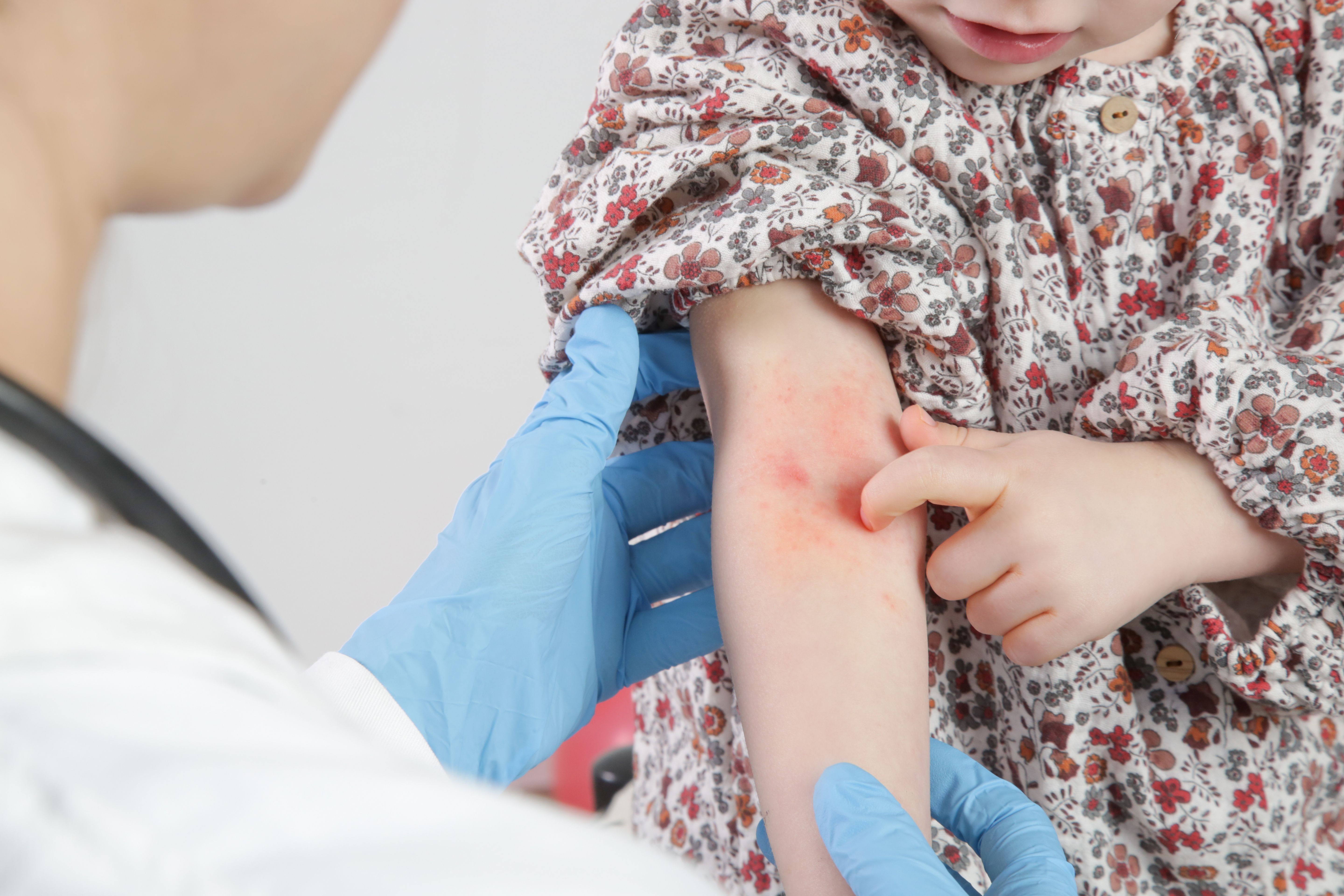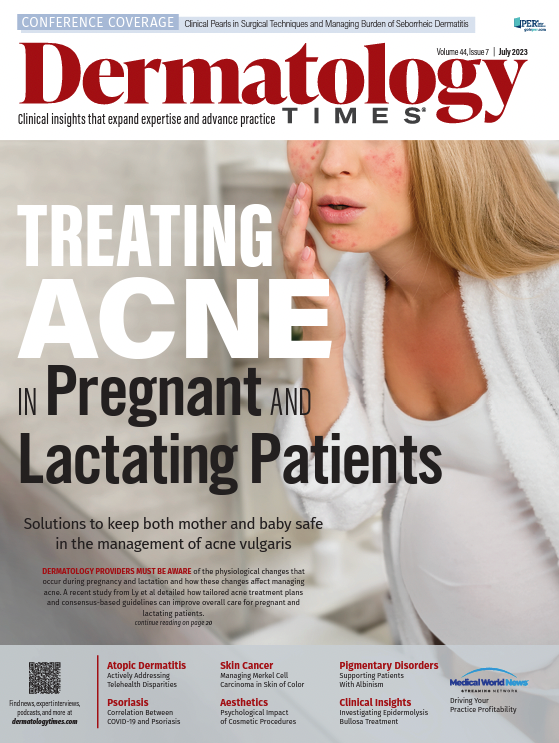- Case-Based Roundtable
- General Dermatology
- Eczema
- Chronic Hand Eczema
- Alopecia
- Aesthetics
- Vitiligo
- COVID-19
- Actinic Keratosis
- Precision Medicine and Biologics
- Rare Disease
- Wound Care
- Rosacea
- Psoriasis
- Psoriatic Arthritis
- Atopic Dermatitis
- Melasma
- NP and PA
- Skin Cancer
- Hidradenitis Suppurativa
- Drug Watch
- Pigmentary Disorders
- Acne
- Pediatric Dermatology
- Practice Management
- Prurigo Nodularis
- Buy-and-Bill
Publication
Article
Dermatology Times
Consistent Use of Ceramide-Containing Products Combined With Prescription Treatment Improves Pediatric AD
Author(s):
A poster presentation from SCALE 2023 evaluated the use of ceramide-containing skin care products with prescription treatments for a healthy skin barrier.
triocean/AdobeStock

Results from a SCALE 2023 poster presentation1 demonstrated that the consistent use of ceramide-containing skin care products as monotherapy and adjunctive to prescription treatment improved the signs and symptoms of atopic dermatitis (AD) in pediatric patients. Schachner et al noted that AD commonly starts in infancy and early childhood and is associated with pruritis and genetic predisposition. Previous studies have proven that daily use of moisturizers that contain lipids such as ceramides can reduce the rate of AD flares, and therefore the need for topical steroid treatment.
In the study, Schachner et al gathered a panel of 8 pediatric dermatologists, dermatologists, and pediatricians who treat pediatric AD to report on clinical cases from their practice. The panelists reviewed 15 pediatric AD cases and agreed to select 6 patients covering various presentations of pediatric AD, patient ages, and skin types.
During their evaluations, the panelists discussed why they selected a specific case, previous treatments, type of prevention and education provided, skin care as monotherapy or adjunctive treatment, prescription and non-prescription therapy and maintenance treatment, and clinical pearls. The summary of each patient included:
- Patient 1: A 4-month-old boy with Fitzpatrick phototype 3 had eczema since he was one month old and was successfully treated with ceramide-containing skin care.
- Patient 2: A 8-month-old girl with Fitzpatrick phototype 3 presented with keratosis pilaris and eczematous changes, causing her family concern. Her skin condition improved with ceramide-containing skin care.
- Patient 3: A 9-year-old girl with Fitzpatrick phototype 5 has long-standing AD and dark patches on her skin. She received mometasone 0.1% ointment twice daily until clear, followed by crisaborole application once daily. In addition, ceramide-containing hydrating cleanser and moisturizer were successfully applied twice daily.
- Patient 4: A 8-year-old girl with Fitzpatrick phototype 1, possibly having lanolin sensitivity, had recurrent pruritic rashes and scratching since one year of age. Previous treatment with hydrocortisone 1% cream and cocoa butter was not successful. She feels embarrassed by the dark marks and does not want to wear shorts. Treatment was changed to mometasone 0.1% ointment twice daily until clear, followed by crisaborole application once daily. In addition, ceramide-containing hydrating cleanser and moisturizer were successfully applied twice daily.
- Patient 5: A 6-year-old boy with Fitzpatrick phototype 1, has a family history of asthma and AD presented with recurrent pruritic flares on his arms and body, interfering with his sleep. He used a regular soap bar for cleansing, followed by triamcinolone as needed and crisaborole. Treatment was changed to mometasone 0.1% ointment twice daily to the plaques and tapered twice or thrice a week. Ceramide-containing hydrating cleanser and healing ointment were applied once or twice daily. At6 weeks, his skin was clear.
- Patient 6: A 2-year-old girl with Fitzpatrick phototype 1 presented with recurrent rashes and scratching in her sleep. She previously applied hydrocortisone 2.5% cream, which did not help. Treatment was changed to alclometasone 0.05% ointment for the face, mometasone 0.1% ointment for the body, and oral hydroxyzine 10mg. Ceramide-containing hydrating cleanser and healing ointment were applied once or twice daily. The regime cleared her skin 90%.
After discussing the 6 patients and using ceramide-containing skin care products to manage their pediatric AD, the study investigators concluded that “Sharing best-practice in AD therapy and maintenance treatment for pediatric eczema patients may support health care providers treating children to improve clinical outcomes. Consistent skincare use with CER-containing cleansers and moisturizers as mono or adjunctive to prescription treatment promoted a healthy skin barrier.”
Reference
- Schachner L, Andriessen A, Benjamin L, et al. Pediatric atopic dermatitis patient case series integrating ceramide-containing cleansers and moisturizers to prescription treatment and maintenance approaches. Poster presented at the 18th Annual Music City Symposium for Cosmetic Advances & Laser Education; May 17-21, 2023; Nashville, TN.







